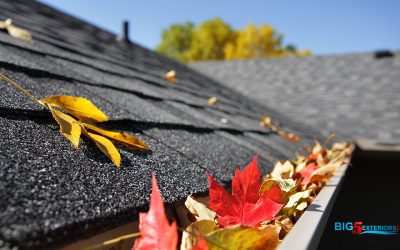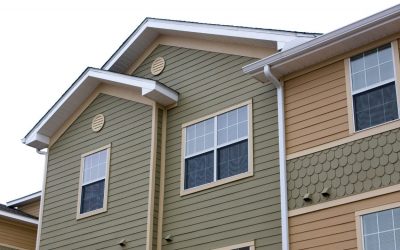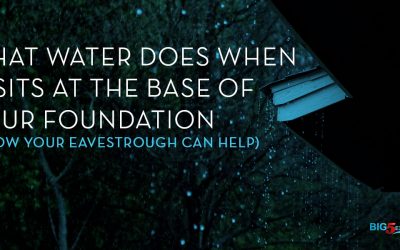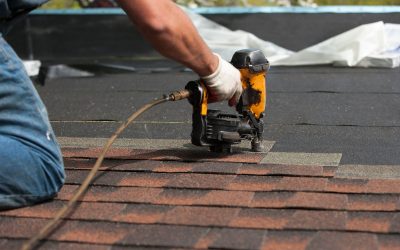Summary:
- Hail can cause damage to roofs, siding, and eavestrough.
- Homeowners should assess their eavestrough for physical damage, damaged downspouts, and clogged eavestroughing.
- Vinyl siding can peel, be removed, or have holes after a hail storm.
- Homeowners should check their roofs for asphalt wash, shingles on the ground, and curling or peeling shingles.
It’s that time of year again. If you’ve lived in Calgary for a year or more, you’re probably well aware of what’s coming: thunderstorms and hail. One creates an incredible visual spectacle, and the other creates the same (but for different reasons).
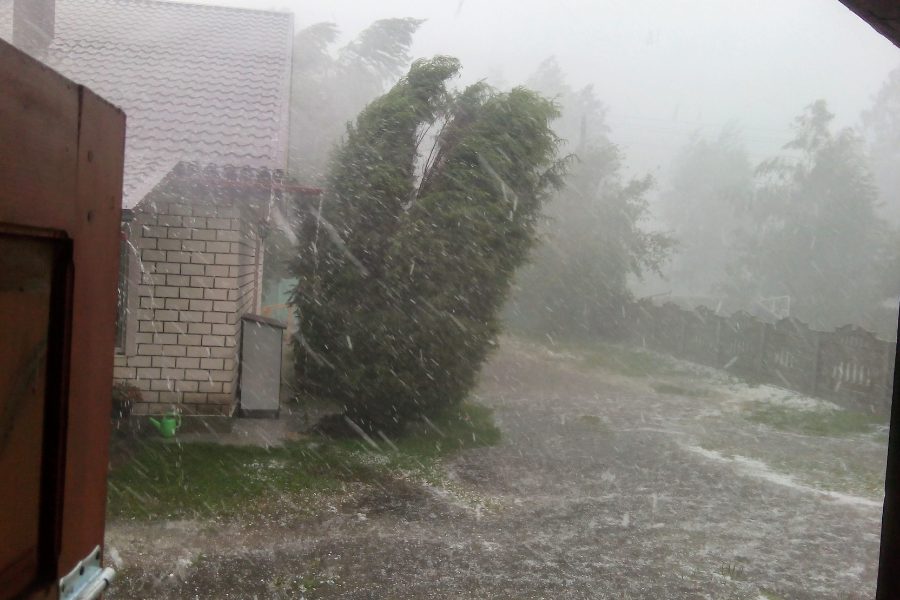
Whenever we get nailed with a bunch of hail, we start receiving calls from homeowners shortly thereafter. It makes sense, too: the hail damaged their roof, siding, eavestrough, or all three. It’s unfortunate, but that’s why we’re here: to get your home back to looking (and feeling) pristine. To that end, we’ve put together a list of things to look for that can help inform whether or not it’s time for a repair (or replacement).
Assessing Your Eavestrough (Gutters)
Your eavestrough are fairly “set and forget”. Hang them, slope test them to ensure they drain properly, and then off you go. Because of this, most people tend to forget about their eaves until their eaves are giving them a reason to think about them.
After a hail storm, it’s not uncommon to find:
- Physical damage to the eavestrough itself. This may be in the form of small dents/marks, though older eavestrough (or eavestrough that was installed poorly) may come loose from their hangers or “sag” in the middle.
- Damaged downspouts. The soft metal used in downspouts is a target for hail and often shows some new scars after a storm. Check the end of the downspout and ensure it’s open and able to facilitate water flowing freely through it.
- Clogged eavestroughing. Clogged eaves can cause a number of problems, from causing water to leak over the sides to causing eavestrough to fall from the building (the additional water weight, combined with poor installation or rotting fascia boards, creates a “perfect storm” for this).
If you’re handy and don’t mind spending some time on the roof, it’s easy enough to clean your eaves to prevent further clogging. While you’re up there, pour some water in the eaves and observe how it drains. If it sits in the middle, your eavestrough should be resloped to facilitate proper drainage.
Learn more about our eavestroughing services we offer to Calgary and area.
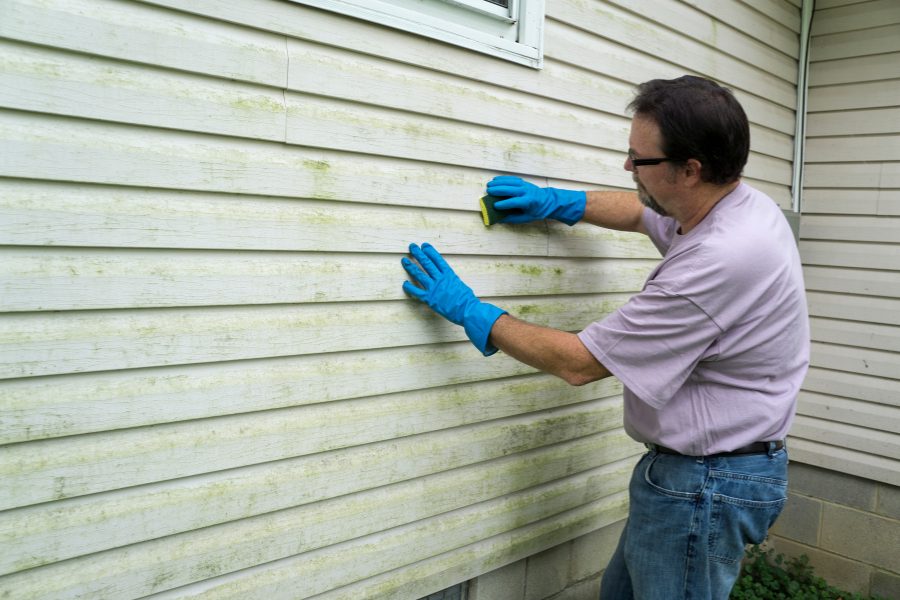
Assessing Your Siding
We’re speaking to vinyl siding specifically, as most homes in Calgary use vinyl as their siding material of choice. While durable, vinyl siding is still able to be damaged and the storms that the Calgary area sees are strong enough to do it.
Look for:
- Siding that is peeling away from the building. This may not be as obvious as you think. Sometimes a piece of siding peels back in a corner but remains mostly intact- in these situations, water can easily creep behind the siding during the next rainfall.
- Siding that has been removed from the building. This is more common on older homes where both the siding and the material underneath it are beginning to show their age.
- Holes in your siding. Even if the siding doesn’t come off of the building, it’s not uncommon to find holes where a particularly stubborn piece of hail decided to leave its mark.
Your siding is to your home what armor is to a tank: it’s the protective layer that shields the vulnerable pieces beneath it from the elements. If your siding is damaged, learn about our siding repair services.
Assessing Your Roof & Shingles
Once you’ve checked out your eavestrough and siding, there’s just one (large) piece of the puzzle remaining: your roof. Your roof takes the brunt of the beating when it hails, and it isn’t always so obvious from the ground level that yours may have a problem.
Here are a few things to look for:
- Asphalt wash. After a storm you’re likely to find asphalt granules (called “asphalt wash”) along the ground, especially near downspouts. A little bit of wash isn’t a terrible thing; a significant amount of wash suggests that your shingles took a pretty big beating. Don’t forget to check your grass near any downspouts.
- Shingles on your lawn. Or driveway. Or street. If it’s not on your roof, you’ve got a problem.
- Shingles that are curling or peeling away from the roof. This isn’t necessarily because of hail, but since you’re up there anyway, this is always a good thing to keep an eye out for.
If your roof is need of repair, learn more about our roofing and roof repair services.


